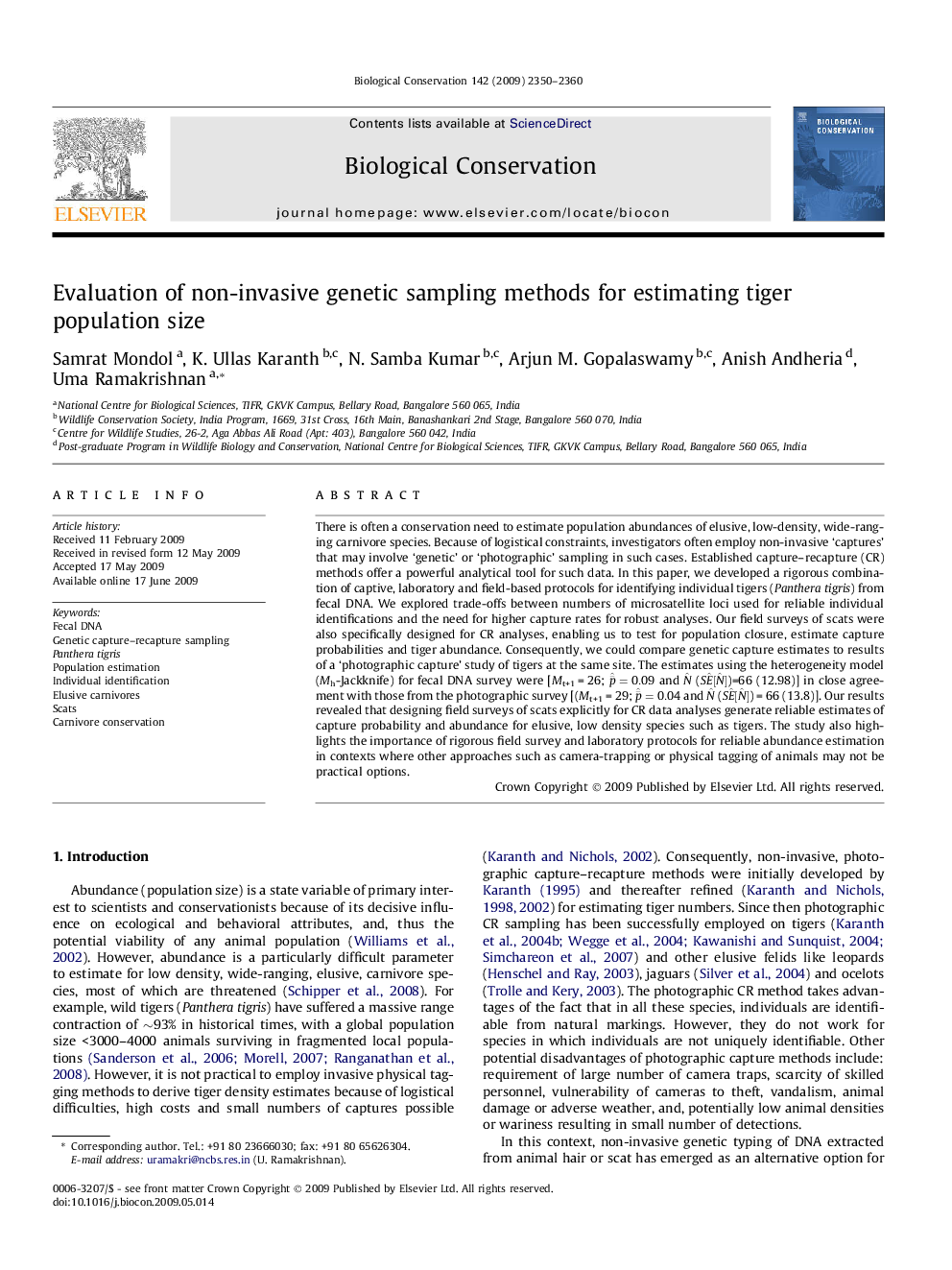| کد مقاله | کد نشریه | سال انتشار | مقاله انگلیسی | نسخه تمام متن |
|---|---|---|---|---|
| 4386231 | 1304560 | 2009 | 11 صفحه PDF | دانلود رایگان |
عنوان انگلیسی مقاله ISI
Evaluation of non-invasive genetic sampling methods for estimating tiger population size
دانلود مقاله + سفارش ترجمه
دانلود مقاله ISI انگلیسی
رایگان برای ایرانیان
کلمات کلیدی
موضوعات مرتبط
علوم زیستی و بیوفناوری
علوم کشاورزی و بیولوژیک
بوم شناسی، تکامل، رفتار و سامانه شناسی
پیش نمایش صفحه اول مقاله

چکیده انگلیسی
There is often a conservation need to estimate population abundances of elusive, low-density, wide-ranging carnivore species. Because of logistical constraints, investigators often employ non-invasive 'captures' that may involve 'genetic' or 'photographic' sampling in such cases. Established capture-recapture (CR) methods offer a powerful analytical tool for such data. In this paper, we developed a rigorous combination of captive, laboratory and field-based protocols for identifying individual tigers (Panthera tigris) from fecal DNA. We explored trade-offs between numbers of microsatellite loci used for reliable individual identifications and the need for higher capture rates for robust analyses. Our field surveys of scats were also specifically designed for CR analyses, enabling us to test for population closure, estimate capture probabilities and tiger abundance. Consequently, we could compare genetic capture estimates to results of a 'photographic capture' study of tigers at the same site. The estimates using the heterogeneity model (Mh-Jackknife) for fecal DNA survey were [Mt+1 = 26; p¯Ë=0.09 and NË (SEË[NË])=66 (12.98)] in close agreement with those from the photographic survey [(Mt+1 = 29; p¯Ë=0.04 and NË (SEË[NË]) = 66 (13.8)]. Our results revealed that designing field surveys of scats explicitly for CR data analyses generate reliable estimates of capture probability and abundance for elusive, low density species such as tigers. The study also highlights the importance of rigorous field survey and laboratory protocols for reliable abundance estimation in contexts where other approaches such as camera-trapping or physical tagging of animals may not be practical options.
ناشر
Database: Elsevier - ScienceDirect (ساینس دایرکت)
Journal: Biological Conservation - Volume 142, Issue 10, October 2009, Pages 2350-2360
Journal: Biological Conservation - Volume 142, Issue 10, October 2009, Pages 2350-2360
نویسندگان
Samrat Mondol, K. Ullas Karanth, N. Samba Kumar, Arjun M. Gopalaswamy, Anish Andheria, Uma Ramakrishnan,